In 2019, former Woman Police Constable (WPC) Sharon Bird opened the Daily Mail’s YOU Magazine and turned to an article celebrating 100 years of women in the Metropolitan Police. She recognised herself in the photograph (below) taken by Tom Stoddart in 1984 and had never seen it before. Sharon is seated fourth from right during a break securing the area near the Libyan Embassy in St James’s Square during the 11-day siege.
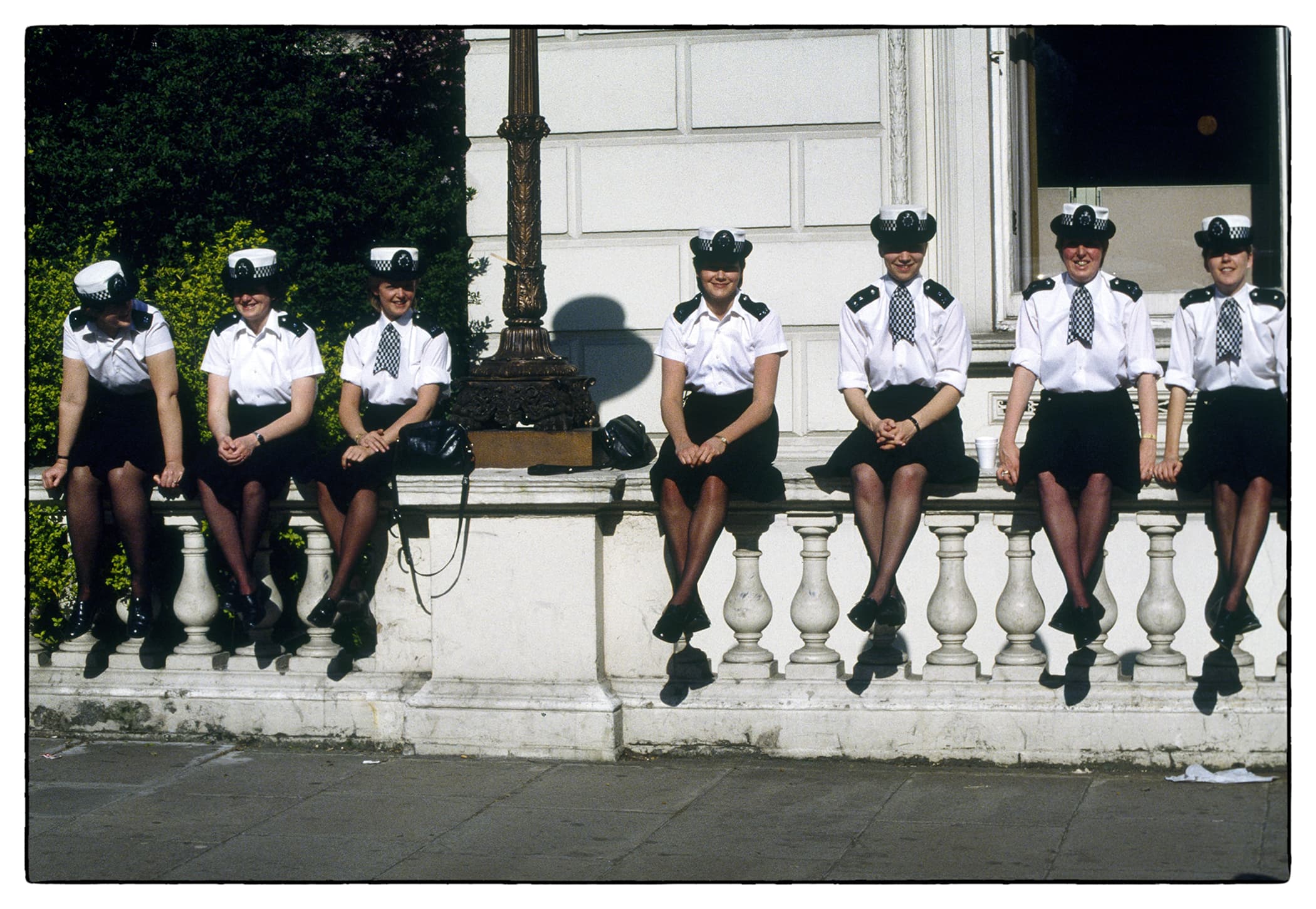
‘Working in central London during the 1980s and being photographed was fairly common place. It was considered a part of the job. I didn’t give much thought to it, as I was unlikely to ever see the end product,’ explains Sharon. WPCs were only issued with impractical police skirts to wear, the flimsy hats were more decorative than protective. It wasn’t uncommon for WPCs to turn up at an incident to be told they had called for a policeman not a woman.
‘I had heard of that happening, as well as female officers purportedly receiving the station stamp on their person. I was fortunate not to have experienced either although I felt I had to go above and beyond to prove myself worthy of equal pay during that era. In 1984 I received a commissioner’s commendation for bravery. I had fought to disarm a Scots guardsman who was in possession of a carving knife having an altercation with another male. On reflection, I wonder whether I was truly brave or a bit stupid to police the incident at that moment the way I did, especially as I had received injuries from the knife and struggle.’
Sharon tracked down Tom who provided her with a copy of the photograph. Although it will always be tinged with sadness, due to the murder of colleague Yvonne Fletcher while on duty during a protest demonstration against Colonel Gaddafi the same year, it now hangs on Sharon’s bedroom wall amongst other non-police photos that are precious moments in her life. Now retired, she says they are, ‘photos I wake up to every morning with a smile’.
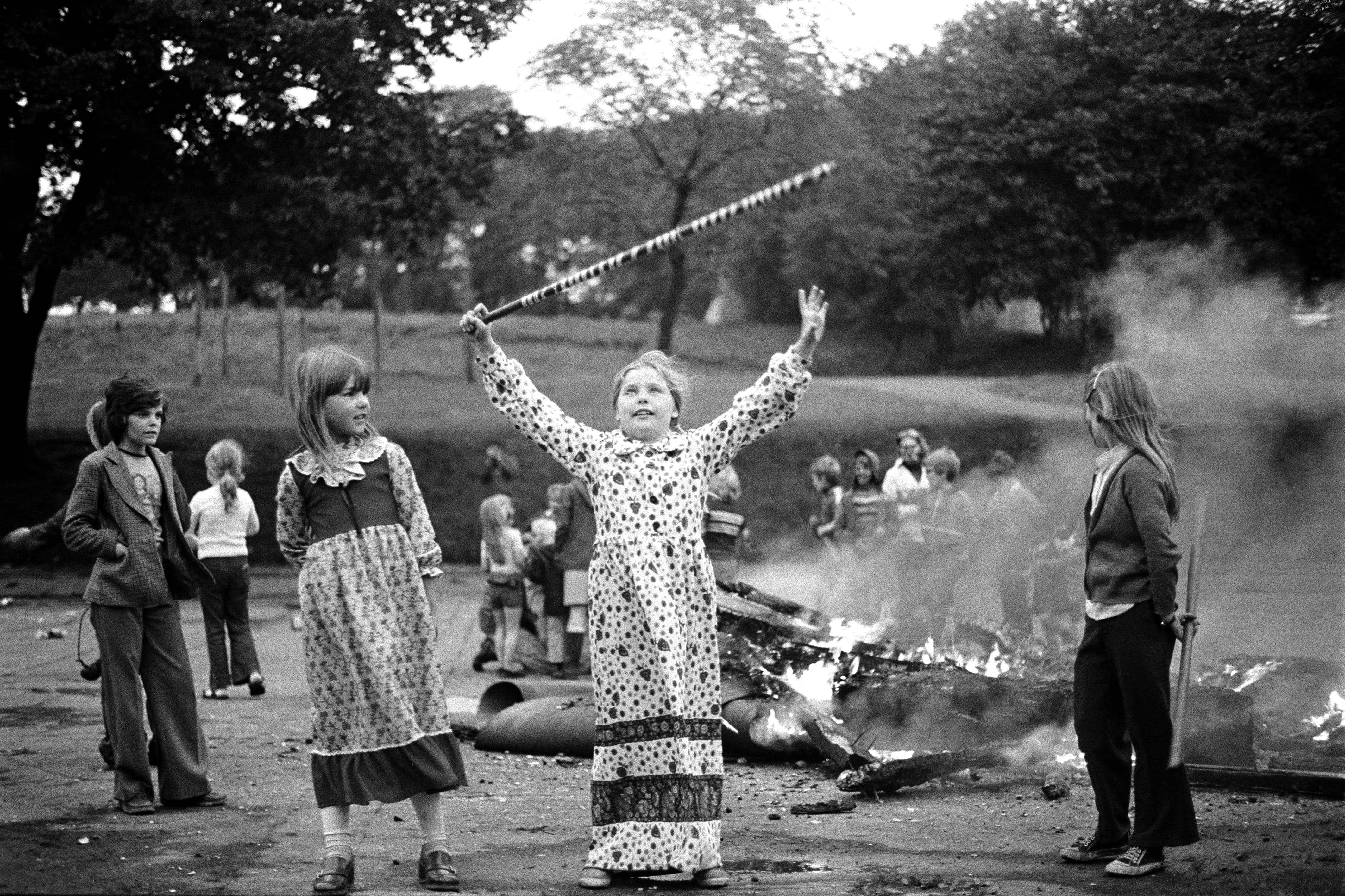
Blast from the past
Aged 12, Tracy Moss moved away from a traumatic and brutal childhood in the Elswick area of Newcastle upon Tyne. Decades later, she began to reconnect with the city through various social media sites. In 2017, Tracy saw herself in the photograph: ‘Elswick Park – Juvenile Jazz Bands 1979’ by Tish Murtha (above). Tracy is pictured on the left looking at friend Rosa holding up a home-made majorettes mace. ‘That photograph has opened up a whole new world. It was a forgotten world. The photo has led me on a really surreal journey so far, even as far as you ringing me up. It’s like this photograph is undoing a lot of bad for me, the good outweighing the bad. That was a very bad time for me in my life. What we were doing round the bonfire, playing and the Juvenile Jazz Bands, it was an escapism from a very tough era,’ reveals Tracy. Tracy played the kazoo in the Ryehill Victorians Jazz Band, proudly marching the streets in a big hat with plumage and chain strapped under her chin.
‘I just wish there were more photographs of me but there was nobody in my family that was going to take a picture. There’s hardly any photos of me from that era so that is pretty special. So many emotions in that one photograph. I can tell you I’ve got that photo on my phone, I have a really big print but it got to a point where I didn’t look at it and had to put it away. With friends like Rosa I got by. That’s why the photograph means so much, the people in it got me by and even they didn’t know what I was going through at the time – they know everything now, it’s such a poignant photograph.’
Mistaken identity
It’s not always straightforward when someone is convinced they are in a photograph. Matthew Butson, Vice President at the Getty Images Hulton Archive, knows of 56 women who thought they were one of the girls in Bert Hardy’s classic 1951 picture of two young women sitting on railings at Blackpool. One woman was so sure it was her, she sent a piece cut off the dress she wore on the day.
‘Much of the time we know the identities of many of the folks in the shots and often these are well documented – be it the Bert’s, The Gorbals Boys, Glasgow, 1948 or Toffs and Toughs, 1937, by Jimmy Sime and we do know the identify of the Blackpool girls – Pat Stewart and Wendy Clarke – both now deceased. I met both the girls – always a story behind the story and not always going to plan, the Gorbals Boys was sad, one had made it and the other had a rough life. They didn’t get on at all when we got them back together for a promotional shoot in the late 80s, shot inevitably by Bert!’
Dafydd Jones, a relentless chronicler of Oxford University balls in Thatcher’s Britain, has stopped putting the names on pictures to avoid the hassle of embarrassing them. With the Internet increasingly intrusive, individuals are taking action: ‘People have their secretaries curating their online image. It may be because they don’t particularly like the person they’re with or their hairstyle has changed. I’ve literally had people saying they’ve lost weight or look completely different so I don’t want this picture on your site.’ A jealous husband asked Dafydd to remove photographs of his wife with other men. Solicitors have tried to take his website down. An Albanian man threatened to come round and ‘get him’!
The image, ‘Burning Boat, Oriel, Oxford, 1984’, printed in Oxford: The Last Hurrah published by ACC Art books, has come to represent a time in England of the Big Bang (the day the stock market was deregulated in London) for Dafydd. ‘It represented risk taking and the explosion of money. One of the people in the picture recently saw it and wrote to me and confirmed he had gone on to be involved in the city. He named his company after Oriel College.’ See below.
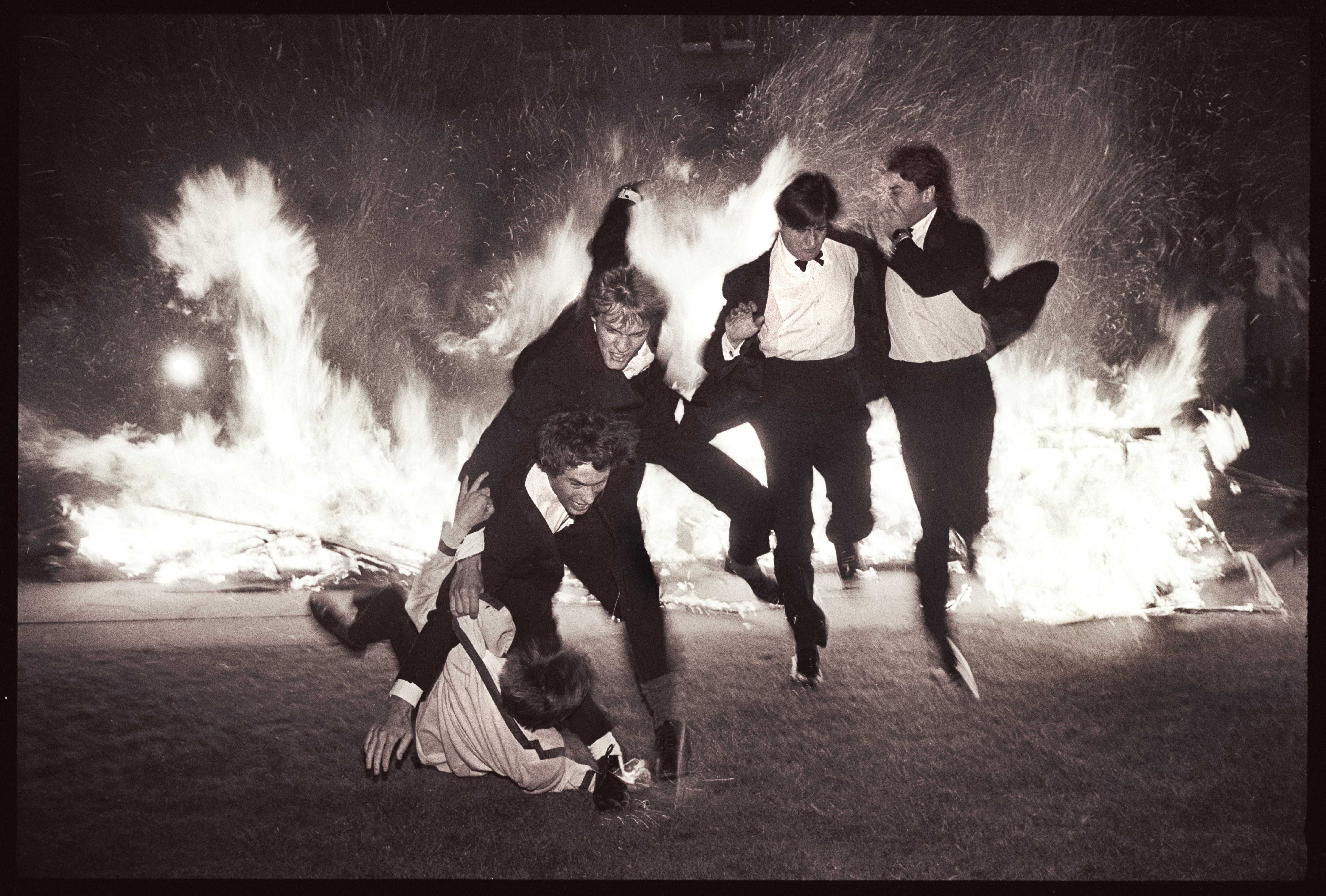
Tracking down
It’s not always those that recognise themselves in photographs who contact the photographer, often the photographer strategically sets out to find them. To commemorate the 25th anniversary of the fall of the Berlin Wall, Tom Stoddart embarked on a mission to identify those he documented during that historic night at Checkpoint Charlie and the Brandenburg Gate (see below).
‘When you get to my stage of career, it’s a natural thing. The Berlin Wall revisited was terrific because I learnt an awful lot. It took me six months to set it up. My assistant and I had to walk around Berlin putting up posters appealing for information. I found six people who I photographed on the night the wall came down and they told their stories; it was great because on the night, obviously I didn’t take any names or captions. It’s an important exercise for all photographers to do, a big lesson in keeping diaries and notebooks and names when you’re shooting because when you try and find someone 25 years later it’s a hell of a job to do.’
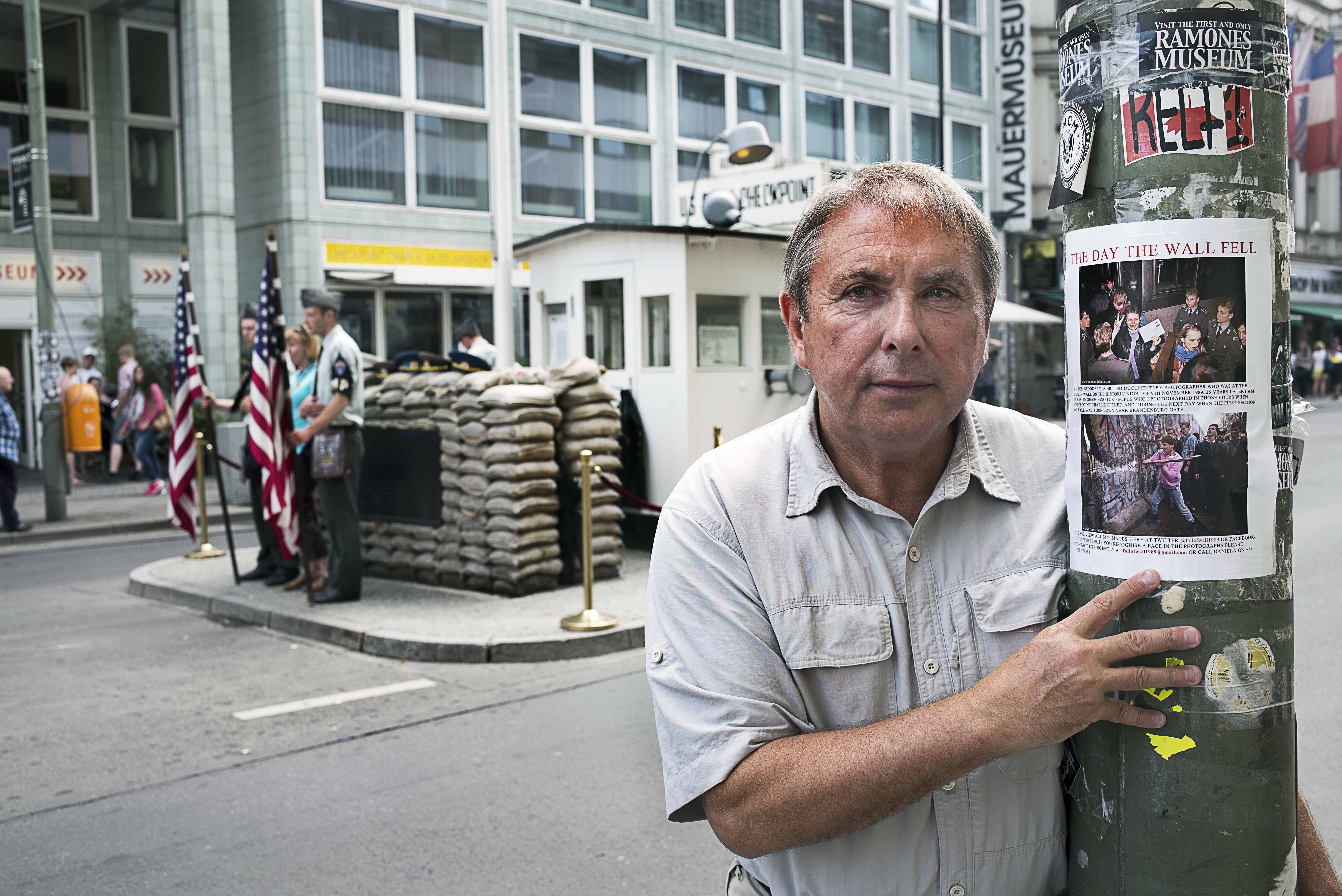
Gun nation
Eighteen years after his reportage, Gun Nation, photographer and film maker Zed Nelson decided to revisit the subject as it was clear the situation with gun deaths in America hadn’t improved. Half a million more people had been shot and killed since he made those first pictures and he wanted to question whether those in his original pictures had changed their views, including Mike pictured holding a gun and his daughter (bel0w).
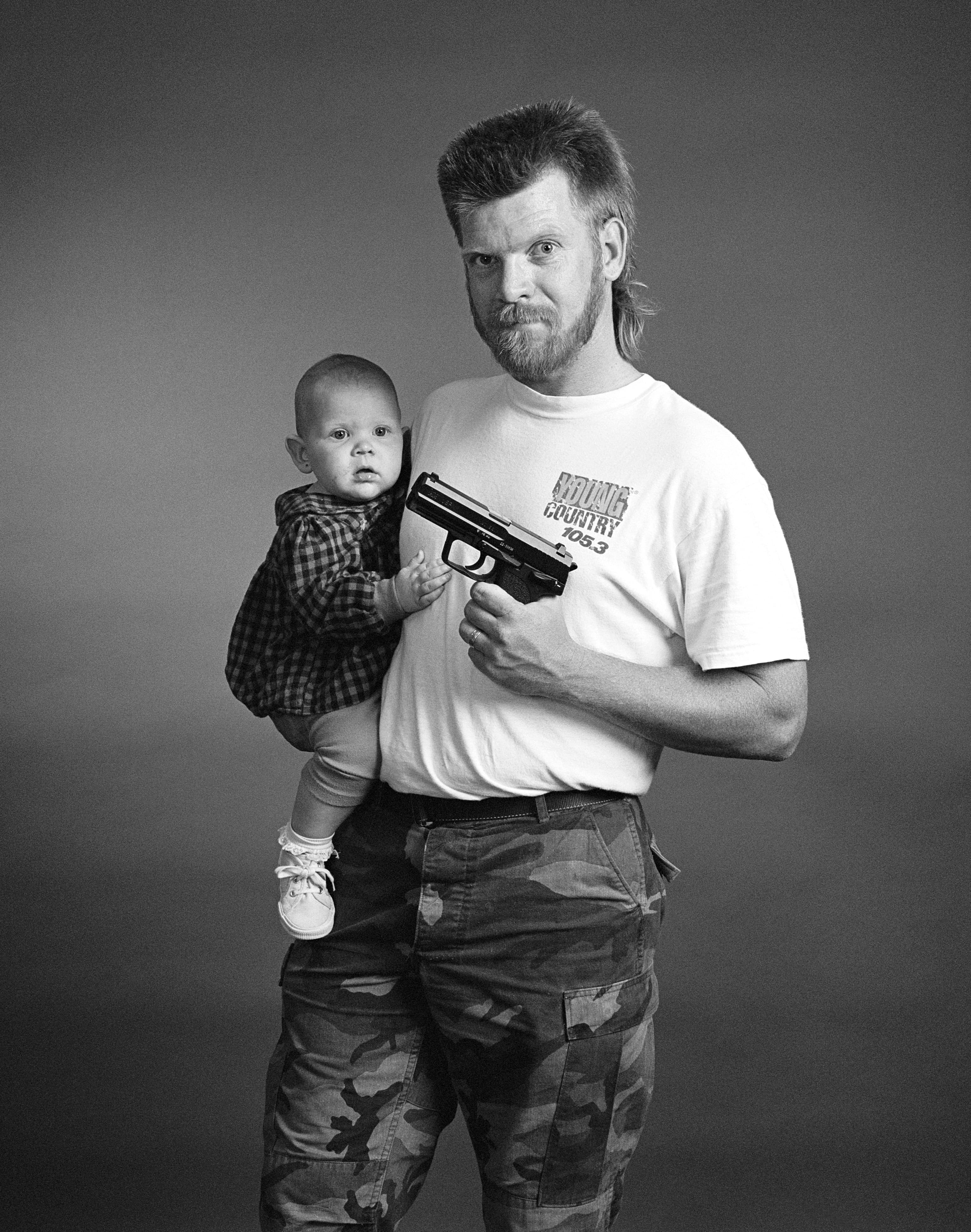
‘Mike and the baby is a classic one because it became the signature image of the series. Originally it was going to be published on the cover of TIME magazine to launch the story. I didn’t have a consent form for that particular picture, even though I had them for all the others. They sent me a mocked-up cover which looked amazing, obviously I was very excited but they needed a form. I’d realised that was the only one I didn’t have because it was from early in the series. I had no way of contacting Mike – this was before email – so I had to fax the picture to all the gun shops in Dallas where I had taken the picture and asked to put it on their pin-board. I never heard back and the deadline came. TIME removed the picture from the cover and replaced it with a painting.’
When Zed went to document the aftermath of the Columbine High School massacre, anti-gun protesters had appropriated the image of Mike for their placards. ‘Mike was not ashamed of the image even though it had rattled and upset people. People found it unsettling because of the proximity of the gun and the baby. When I went to his house the second time, he had a big blown-up poster-size version of the photograph in his kitchen.’

Working as a photojournalist for 22 years, I’ve also had my share of inquiries from those who’ve appeared in my pictures – most have been a positive and rewarding exchange. I was initially terrified when ‘Big John’ got in touch when he saw himself lying on the grass with a beer in an image taken at Royal Ascot (above); he came to the exhibition opening and the print now hangs in his home.

When a mother saw her daughter Sophie, photographed during a night out in Brighton on the cover of The Sunday Times Magazine, she asked for a print and advice on how her other daughter might get into modelling. When the shutter is released, a bond between photographer and those in the photograph is sealed for a lifetime and like many relationships, you can’t be sure how it will unfold.
Further reading
Our best documentary, street and photography tips








